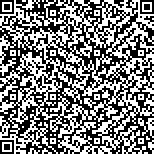| 摘要: |
| [目的]该文选取云南省石漠化地区2个休耕试点区为研究区,研究使用RapidEye多光谱影像监测地块休耕状况的方法,为休耕精准监测提供参考。[方法]获取2017年8月2日覆盖研究区的RapidEye影像,进行大气校正、图像配准,选取休耕区及周边地区的绿肥作物、水稻、玉米、烟草、光温棚、遮阳棚、林地及水体等典型地物,分析绿肥作物与其他地物的光谱差异及可分离性; 对休耕区影像进行监督分类,获得分类结果,将分类结果二值化为休耕与其他地物,然后使用地块矢量数据与二值化结果进行相交统计,得到地块休耕面积及比例,最后以休耕比例判定地块是否进行休耕。[结果]绿肥作物与其他典型地物光谱差异明显,可分离性良好; 验证结果表明,在石漠化休耕区使用RapidEye影像基于休耕比例判别地块休耕的监测方法总精度为9889%,Kappa系数为09292,错分误差为0,漏分误差为119%; 判别阈值对休耕地块错分或漏分有影响。[结论]具有红边波段的RapidEye影像可用于石漠化休耕区的精准监测。 |
| 关键词: 遥感土地利用生态修复空间信息监测 |
| DOI: |
| 分类号:S127 |
| 基金项目:四川省公益性研究深化工程项目“基于空间信息技术的四川秦巴山区农业自然灾害风险评估及预警技术研究”(2016GYSH 033); 四川省财政创新能力提升工程专项资金项目“基于遥感技术的四川盆地主要农作物估产系统研究”(2016GXTZ 012); 云南省科技计划项目“云南主要农作物遥感监测初步构建”(2018BB02907) |
|
| MONITORING FALLOW FARMLAND IN ROCK DESERTIFICATION REGION BY USING RAPIDEYE IMAGE |
|
Li Zongnan, Wang Xin, Jiang Yi, Li Zhangcheng, Dong Xiuchun, Ren Guoye
|
|
Institute of Remote Sensing Application, Sichuan Academy of Agricultural Sciences, Chengdu, Sichuan 610066, China
|
| Abstract: |
| This research is intended to choose two fallow areas in rocky desertification region as research objects for monitoring, tests the availability and precision of monitoring of fallow farmland by using RapidEye image, so as to provide reference for accurate monitoring of fallow farmland. A parcel survey was conducted in July 2017, and a RapidEye multi spectral image in Aug 2th 2017 were collected. Image was atmospherically corrected by using the tool of fast line of sight atmospheric analysis of hypercubes. Green manure, rice, corn, tobacco, light greenhouses, awnings, forest land and water features in the research region were compared in spectral curve. The results revealed that, there were significant differences between green manure and other ground objects in the spectral features of green band and red edge band. Moreover, the images of fallow farmland were supervised and classified, and the classification results were obtained. And the classification results were binary to fallow land and other land objects. In addition, the vector data of land blocks were used to intersect with the binary results for statistics, and the fallow area and proportion of land blocks were obtained. Finally, the fallow proportion was used to determine whether the land was fallow or not. The green manure crop has obvious difference in spectrum from other typical features, and the separability is good. The results of precision validation showed that, the overall accuracy of the method based on the fallow ratio is 98.89%, the Kappa coefficient is 0.929 2, the commission error is 0, and the omission error is 1.19%. The threshold of the fallow ratio has an effect on commission error and omission error. The irregular land boundary, long and narrow plots, low lying plots would increase the error of fallow monitoring in rocky desertification region. According to the result of this research, RapidEye image can be used in the accurate monitoring of fallow area in rock desertification region. |
| Key words: remote sensing land use ecological restoration spatial information monitoring |

